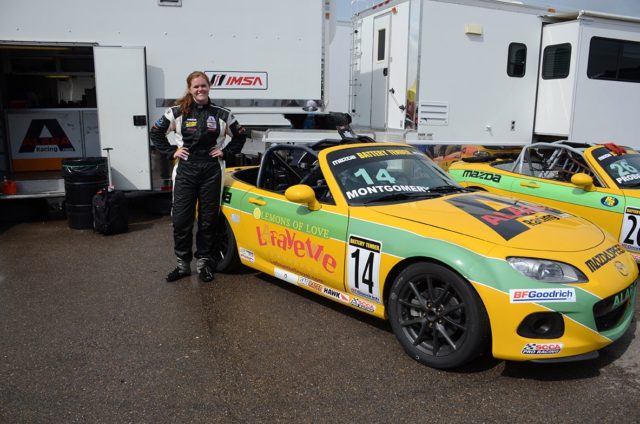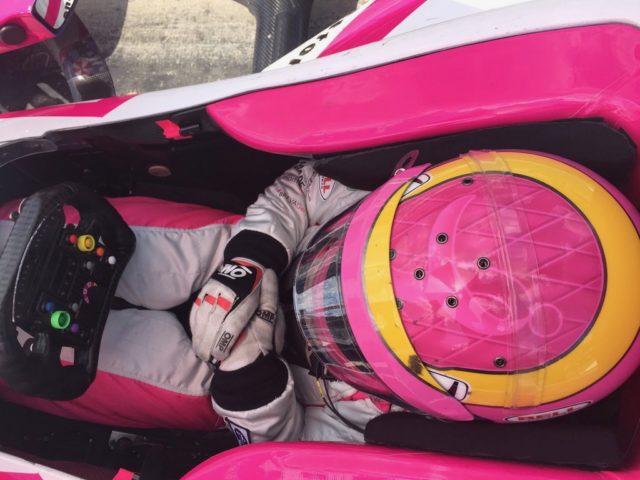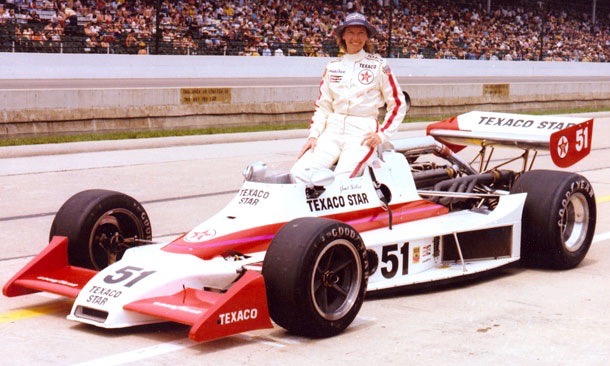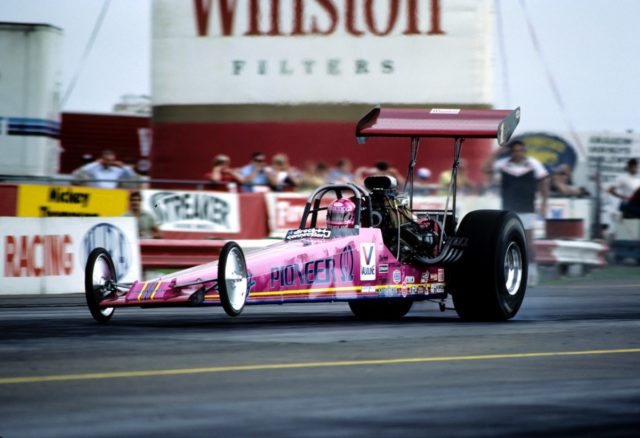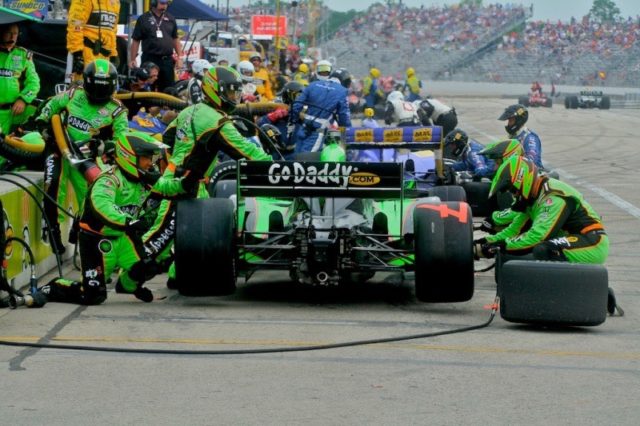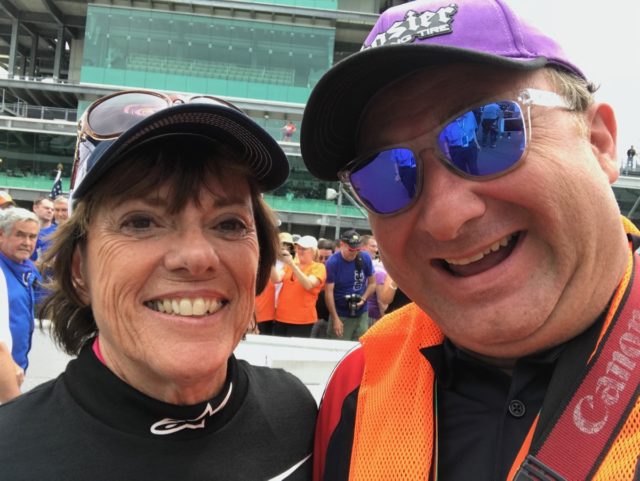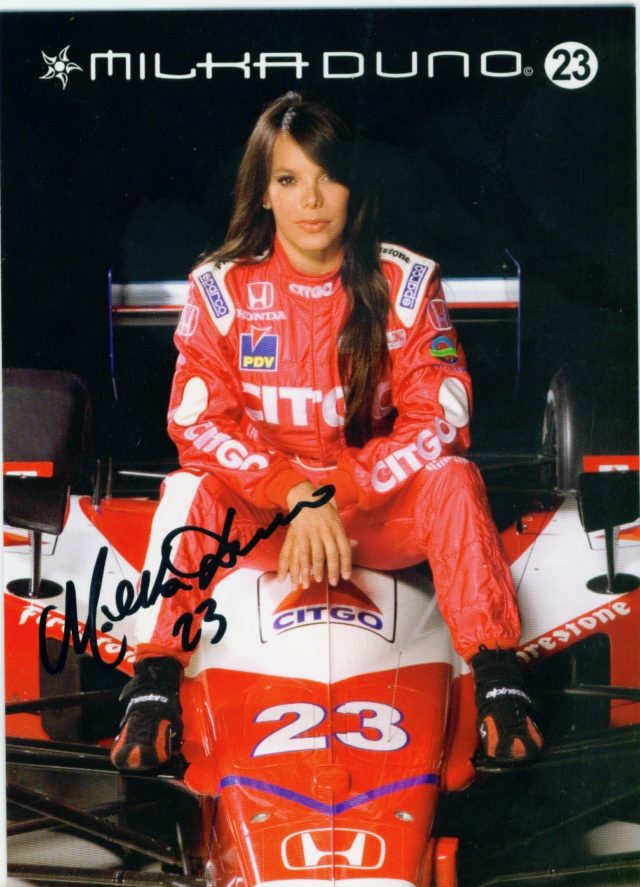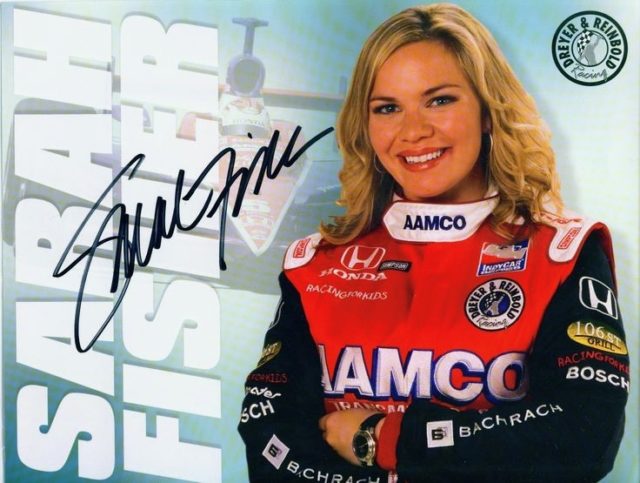Most of you who know me personally or have read me have certainly observed that I have little patience for “political correctness.” Further, the shouting down of a different opinion with “you sexist, homophobic, xenophobic, racist” doesn’t really fly either – no matter what side you are on. But in 2017 – really – 2017!, when my friend, race driver Sarah Montgomery, brought my attention to one of the most profoundly stupid ideas to come along in racing, since Michael Andretti tried to auction off an active IndyCar at Gooding and Company for sponsorship dollars, I had to speak up. But I also have to opine…
Pippa Mann, a veteran of IndyCar and several European open wheel series was contacted repeatedly by a European group in regards to a “women only” racing series. She went public with what she found to be very personally insulting. Essentially an open wheel series, using older GP2 cars, the grid would be made up entirely of the fairer sex and be a side show to a larger current series. Certainly another “big idea”, but undoubtedly an idea that sets racing back 50 years. As Pippa put it in blog, “A consortium in Europe had unilaterally decided that what female racing drivers needed to further their careers was not the funding to keep racing, not support, and not the choice to race where-ever their experience placed them best, but instead that segregation was the way forwards.”
She continued, “They wanted to put us in second hand, second-rate GP2 equipment whatever our experience levels, and have us racing amongst ourselves in a special sideshow series just for girls, competing for a girl’s only cup. And the cherry, on top of the icing, on top of the cake? This stripping of power away from female athletes, in one of the few sports where men and women can and do compete equally, was being presented as a way to empower us? No thank you.”
Mann has since created a hashtag to respond to a second request of this group to develop the idea: #WeRaceAsEquals While it is easy to see her point, as someone who embraces her occupation and gender, not sure it is really worth getting all upset about. Perhaps it might be better to ignore it and realize women still have a long way to go in the sport – focusing on that.
Forty years ago – and yes, I am old enough to remember – Janet Guthrie became the first woman to qualify for the Indianapolis 500 and the Daytona 500. Simultaneously, Shirley “Cha-Cha” Muldowney was showing up the boys in NHRA Top-Fuel, winning the championship in 1977, 1980 and 1982 becoming the first person, let alone a woman, to win three NHRA Top-Fuel titles! These ladies cleared a wide swath for others to follow, including Lyn St. James, Danica Patrick, Simona de Silvestro, Brittany and Ashley Force, to name a few, who have competed in the top echelons of Motor racing. Prior to that the SCCA had a “woman’s race” in several club meeting weekends per year that introduced the world to the likes of the late journalist/racer Denise McLuggage.
Many can also remember the famous “Battle of the Sexes” when Margaret Court took on Bobby Riggs in a highly publicized tennis match and lost. Shortly thereafter, Billie Jean King took on Riggs in a nationally televised match and beat the legend, winning a purse of $100,000. The entire network show, which included King being carried to the court on a chair by four musclebound “slaves” and Riggs escorted to the court by scantily-clad models, would never make it past the politically correct censors of today, unless it was promoted by the WWE.
In most other sports, golf, tennis, track and field, basketball, football, no matter what, there is segregation of the sexes. It is accepted based on the the clear physical differences and performance levels. Yet, this has led recently to proponents of the LGBT’s push for allowing “men who identify as women” to go crush the competition in women’s track and field. While motor racing has a burgeoning number of women participating, other sports have largely kept segregated. This also has much to do with supply and demand. In other sports, there are enough competitors to make segregated leagues. The NBA vs. the WNBA is a prime example. In racing, because of the exorbitant costs, number of seats, limited number of series and cost saving spec cars, the only way in is to play with the big boys. But based on genuine results, the fairer sex still has a long way to go in motorsports.
Consider the inherent physical and emotional differences between men and women. This plays significantly into most sports. In the history of sport, there have been several cross-over attempts by women to play in the men’s leagues. Annika Sorenstam for example, qualified for the PGA’s Bank of America Colonial event in 2003, but then didn’t make the cut in the tournament. She continued a career of domination in the LPGA after that. In racing, which in most cases requires significant and sustained upper body strength, the men have an evolutionary advantage. Like it or not, it’s just the way we are built. Women have competed in F1, NASCAR IndyCar and sports car racing. Aside from the hype of qualifying, few have had real sustained success.
Gloria Steinem undoubtedly would be proud of a number of women’s accomplishments in racing. But in reality, they are few. Lyn St. James is someone I have had the pleasure to have known for most of my life. She is an accomplished driver who qualified at Indy — winning Rookie of the Year honors in 1992. She also successfully ran in sports cars, winning the 24 Hours of Daytona twice, and Sebring once. Lyn now participates regularly and competitively in Vintage Racing events as a very deserving “legend.” However, she is amongst a handful of women drivers who have stepped onto the podium vs. just “qualifying.” It’s a tough game, and she was smart in her personal branding. She managed to get OEM factory funding through the Ford Motor Company at the height of her career and played the game very well. She now works with girls and young women, wanting to climb the same ladders as a consultant and business strategist.
Danica Patrick could certainly be considered the most well-known of the crop of women race drivers. She won the 2008 Motegi IndyCar race and reached the podium at Indy. She made 118 starts in the IndyCar series before making a switch to NASCAR. Unfortunately she has had little success, aside from an eye-roller pole position in the 2013 Daytona 500, in the tin-top show. She has been very controversial to say the least. She is very outspoken, yet hides behind a wall of handlers. She is very talented, yet rarely breaks the Top-15 in what is rumored to be amongst the best equipment on the track. Being an anomaly has played well and badly for her. The famed Sports Illustrated Swim Suit Issue spread, did much for her image yet tarnished her as a racer. It introduced “cheesecake” to racing in what was originally reserved for grid girls — doing the sport no favors. Venezuelan racer Milka Duno, who is more of a pin-up model than a race car driver, has done a fair amount of damage as well — consider even Danica nearly got into a fistfight with the South American for blocking her and being “too slow” during an IndyCar weekend.
One of the most annoying moments I recall in my lifelong observation of motorsport was seeing a poster — in a copycat sense — of IndyCar driver Sarah Fisher all made up in a “sex symbol” styled pose. Sarah may very well have been one of the smartest drivers on the IndyCar grid. She could have been a degreed engineer had she not got the call to run the 500 at age 19. She would go on to be a team owner and a media personality. She was not built for the cheesecake stuff, but it was obvious at the time that the trend was leaning towards “sexy” drivers as opposed to skilled drivers. Sarah is worthy of respect, and always seemed to come up underfunded, whether racing or owning a race team — I was always a fan and felt she could have gone all the way — as a racer, not a pin-up model.
Simona de Silvestro remains one of my favorites that I wish had gotten a proper break. She is sweet, engaging and an absolute terror to the competition in the right equipment. She is an attractive girl, but does not “bleed sexuality” like others have tried to mix into their public image. She is a race driver — and a damn good one. Certainly enough so to be a third driver for the Sauber Formula One team and have numerous starts in the IndyCar series. She now is racing in Formula E — which for many of us is the racing equivalent of what the Love Boat was for B-level actors in the 1970s. I still hope she comes back over here and races again — perhaps Marco could giver her his seat.
So let’s get down to brass tacks here: Motor racing has not been an easy sport for women to break in — however many have. Their success has been limited, but that could easily be debunked by historical participation statistics. Is it insulting to racing — and its participants — to try to segregate an un-segregated sport? In this case I say yes. Insulting because racing is different than any other sport in the world — for that matter, it follows a very different business plan too. It is one of the only sports in the world where the lion’s share of participants “pay to play”. Can you imagine if 80-90% of the players in the NFL had to bring personal sponsorship or write a check to the owners for their ability to participate? The NHL? The World Cup? Because racing is so different, there should be no differentiation in participation: He or she who brings in the most dollars, and drives to the front, wins. While Pippa could stand to do better than her historical results — and Danica could probably win — in a series “just for girls”, I agree that there is no place for it.



